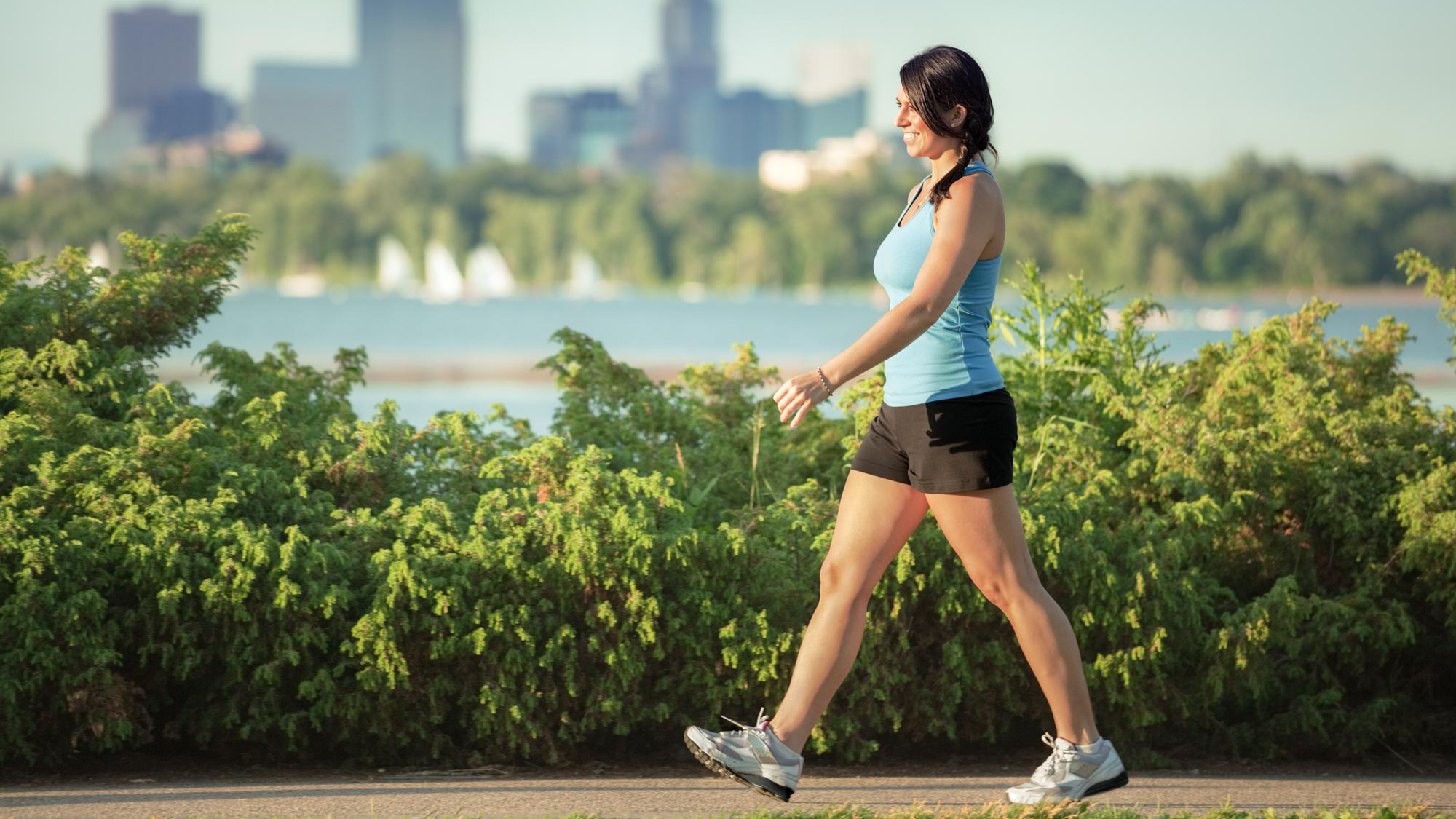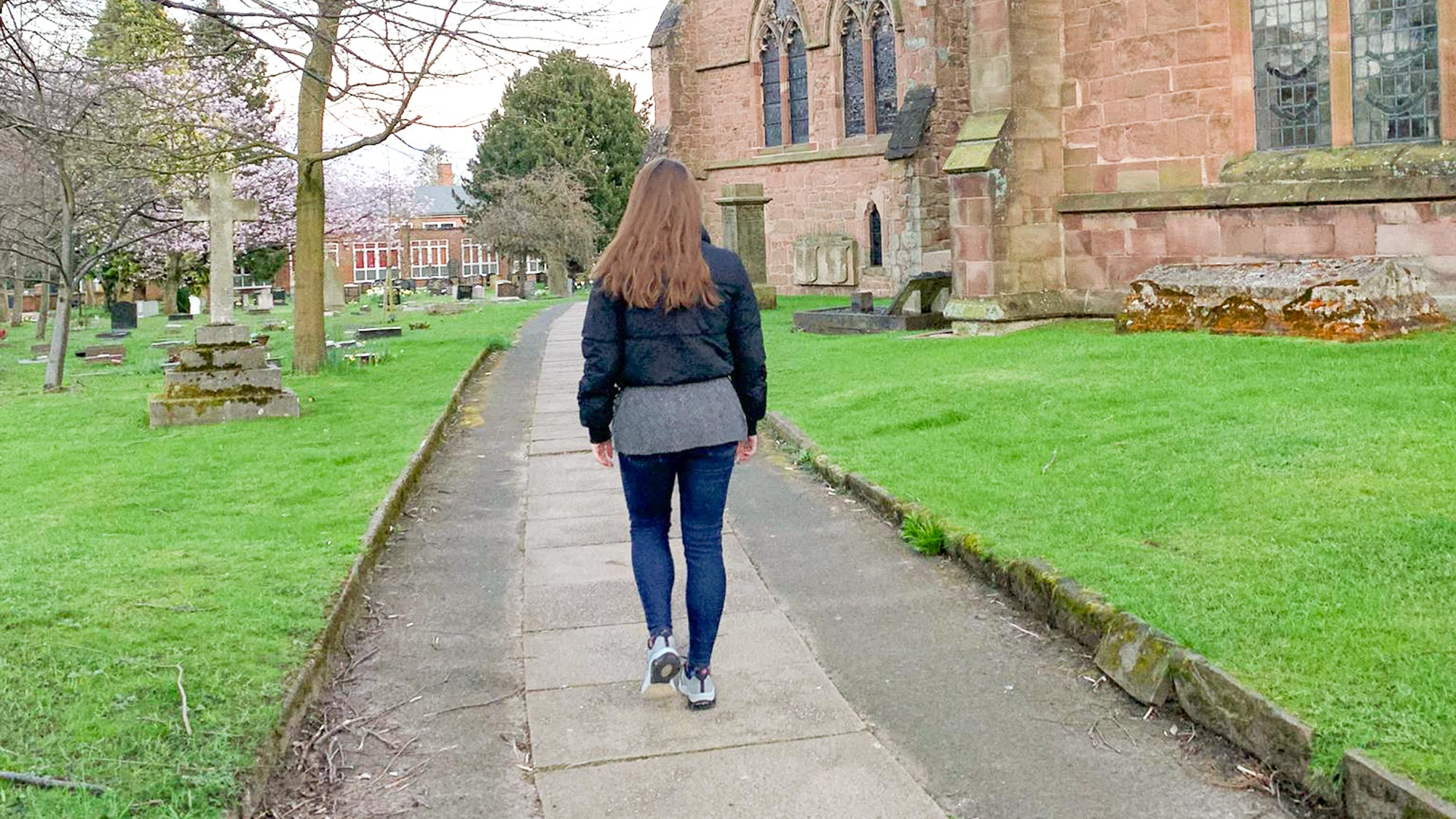I took a mindful walk every day for a week — here's how it changed my mind and body
More awareness, less stress

As someone eager to step outside every day to move my body, come rain or shine, I am no stranger to going for a daily walk. But doing it mindfully (being in the moment)? That’s a different story.
Often, I bolt out of the door caught up in my whirring thoughts as I march around my neighborhood and before I know it, I’m back at my house not having noticed what I saw while I was outside.
So when I had the opportunity to take a mindful walk every day for a week, I grabbed it. I wanted to see if I could experience the physical and mental benefits associated with the activity in this short time.
Each day, I popped my earphones in and used a guided exercise on one of the best relaxation apps targeted at encouraging mindful walking. I varied whether I simply walked around my neighborhood, took a stroll in a park, or had friends or family accompany me on a longer amble.
But walking isn’t the only exercise that promotes mindfulness. Yoga helps to focus attention on the movement of the body at the present moment, according to Harvard Health Publishing. Each week, I roll out one of the best yoga mats in a class, so I was hoping this would aid my challenge.
What is mindful walking?
Integrating mindfulness with walking is a meditative technique that has been practiced for thousands of years, offering various benefits such as improved mood and balance.
According to Michigan State University, mindful walking is the practice of walking while being fully present in the moment, but I prefer Dora Kamau’s, mindfulness and meditation teacher for Headspace, definition: “Mindful walking is being where your feet are.”

Dora Kamau is a meditation and mindfulness teacher at Headspace. She is also a certified breathwork and somatic sound practitioner, offering a variety of unique healing modalities to her community. A lover of plants and nature, Dora lives in Los Angeles. She loves to spend her free traveling and exploring the great outdoors.
What’s more, a walking meditation is not to be mistaken for mindful walking. Kamau explains: “A walking meditation is a formal practice traditionally done after a seated meditation where you bring that practice into your walking, whereas mindful walking is more informal and can be done anywhere.”
How to do a mindful walk

Unlike exercises that require specific form, such as squats, there is no right or wrong way to do mindful walking. Kamau suggests: “Begin by noticing the movement of your body. Notice your feet making contact with the ground and what the ground feels like beneath them.
“Engaging the senses is powerful too,” explains Kamau, and she encourages you to notice what you can see, touch, taste, hear, and smell.
She has some tips for incorporating it into daily life:
- Set an intention: Walking can be done mindlessly and habitually. Setting an intention, such as "when I get up from my chair and go to the sink, I am going to bring my full attention to this," can ensure you do that in practice.
- Tie it in with your chores: You can walk mindfully to your car, when commuting, or when in the grocery store, for example. And, you don’t even have to leave the house. You can walk mindfully inside, such as in the living room.
- Don’t fight resistance: Paying attention as we're walking instead of being on our phones is a choice so there may be some resistance, which is normal. Just notice that and recognize this is something that goes against the grain of everything we know. Attend this practice curiously and openly. Let go of judgment.
Dora's advice made taking a mindful walk seemed like an accessible way to boost my wellbeing and as though it could even be quite fun. So, I laced up my shoes and headed outside each day for a week. Here's what happened.
It wasn’t as easy as it sounds
The idea of going for a mindful walk didn’t seem too difficult, but I was very wrong. As someone with a habit of analyzing life while I walk, overcoming this was the biggest challenge. Calming my racing thoughts was not easy.
The key was not to be hard on myself and if I caught my mind wandering, just bring my attention back to my breath and the present in a non-judgemental way.
After walking, I felt calmer and clearer-headed to make important life decisions. For mindful walking to truly become second nature, I’d need to do it daily for longer than a week.
It reduced my anxiety

I have struggled with anxiety for as long as I can remember, yet a study in the Explore (NY) journal shows that mindful walking can lower levels of anxiety. This was definitely the case for me.
By slowing down my mind, I noticed my steps slowing too which helped me feel calmer and less anxious. And, this wasn’t just during my walks. Even after they finished, I noticed it helped me to be more mindful throughout my life.
For instance, I was more present when sitting in a cafe with friends or going to the shops. I felt an overall sense of calm and peace during times that might have normally caused anxiety.
I exercised more across the week
I’m already pretty active by walking daily and working out four times a week, but I noticed I was grabbing more opportunities to exercise. Normally, I might meet my friends for a coffee or lunch — or maybe even a cocktail — but during the week, we tagged a walk onto the catch-up.
I also walked mindfully on the way to an appointment that I usually would’ve driven to. Enjoying this nice walk in the sunshine made the appointment feel less like another chore on my to-do list and a more pleasurable experience.
What’s more, the health tracker on my phone showed that I had a higher-than-average step count for that week. Although it's not the goal of mindful walking, if you do want to track your steps with a fitness tracker, many of them also have short breathing exercises to complement the practice.
It improved my posture and helped my muscles relax

I can find myself hunching my shoulders when I head out for a walk, especially if I’m stressed or the weather is cold. However mindful walking encouraged me to notice how my body was moving and holding myself.
As I did this, my muscles naturally relaxed, my body lengthened and I found myself walking more upright, without having to force anything. My mom also noticed improved posture when she joined me on a walk, so the benefits can be pretty instantaneous.
I had increased gratitude for what was around me
Despite getting an unpleasant whiff of dog poop as I inhaled to notice what I could smell during one walk, overall, I found myself feeling more appreciative of the small things.
These were experiences I would normally whiz past, ignore, and take for granted. Daffodils glistening in the sunlight, water trickling down a stream, and the wind carrying the sounds of birds tweeting.
Research published in the Personality and Individual Differences journal confirms mindfulness can increase gratitude levels. This increased gratitude boosted my happiness, made me feel thankful to be alive, and I found myself smiling on my walks.
Overall, I've enjoyed the moments of peace it brought to my day and the relaxation it brought to my mind and body. So, I'm going to continue to practice mindful walking whenever I can and I’d encourage you to. After all, it's free and you don't need any equipment to get started.
More from Tom's Guide
Sign up to get the BEST of Tom's Guide direct to your inbox.
Get instant access to breaking news, the hottest reviews, great deals and helpful tips.
Gemma Harris is a UK-based freelance journalist and health writer who has specialist insight into nutrition and gut health. She produces content for multimedia health and lifestyle platforms, including Saga Exceptional, StomaTips, Fit&Well, Get Sleepy, and Metro.co.uk because she has a passion for health and wellness. When not writing, she can be found walking or running in nature, at a yoga or spin class, swimming, or having cocktails with friends.

